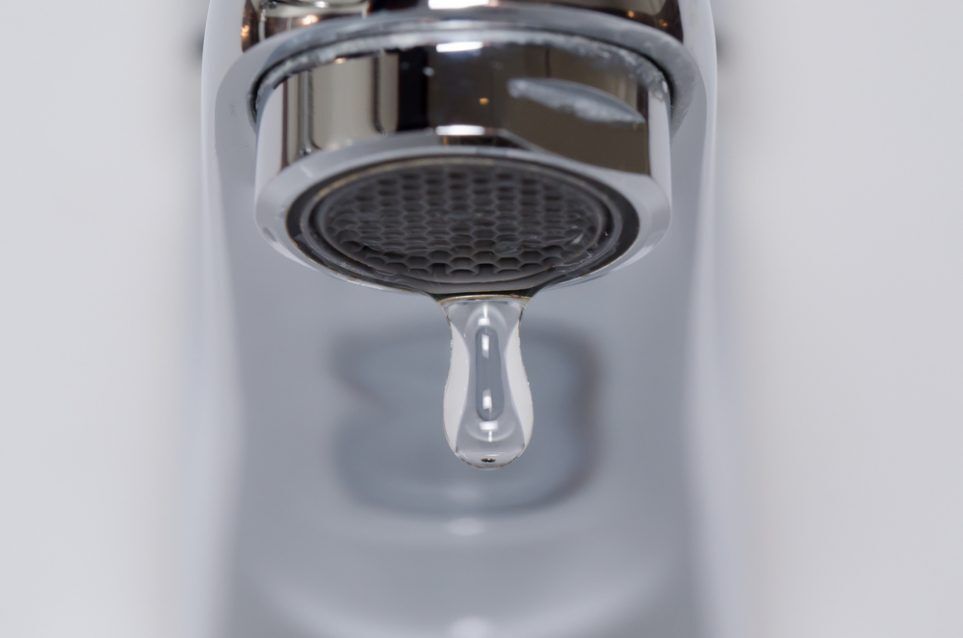Why It's Crucial to Resolve a Broken Faucet
Why It's Crucial to Resolve a Broken Faucet
Blog Article
What are your thoughts regarding What Causes Leaky Faucets & How To Fix Them?

Leaking faucets may appear like a small trouble, yet their influence exceeds just the inconvenience of the noise. From wasting water to incurring unnecessary economic prices and health and wellness dangers, neglecting a leaking faucet can lead to various repercussions. In this write-up, we'll look into why it's vital to resolve this typical home problem promptly and effectively.
Wastage of Water
Ecological Influence
Trickling taps contribute dramatically to water wastage. According to the Environmental Protection Agency (EPA), a solitary faucet trickling at one drip per secondly can squander more than 3,000 gallons of water per year. This not only strains water sources yet additionally affects ecological communities and wild animals dependent on them.
Step-by-Step Guide to Repairing a Dripping Faucet
Devices Called for
Before trying to repair a leaking faucet, gather the essential devices, including a flexible wrench, screwdrivers, replacement parts (such as washing machines or cartridges), and plumber's tape.
Common Tap Issues and Their Solutions
Identify the type of faucet and the particular problem causing the drip. Usual problems include damaged washers, corroded valve seats, or faulty O-rings. Describe maker directions or online tutorials for step-by-step advice on repair work.
Financial Costs
Boosted Water Costs
Beyond the ecological influence, dripping taps can blow up water bills substantially. The built up wastefulness with time equates right into greater energy expenses, which might have been prevented with prompt repair services.
Potential Property Damage
In addition, long term leaking can bring about damage to fixtures and surface areas bordering the tap. Water accumulation can trigger discoloration, corrosion, and even architectural problems if left unattended, resulting in extra fixing costs.
Health Concerns
Mold and Mildew Growth
The constant presence of wetness from a dripping faucet produces a perfect setting for mold and mildew and mold growth. These fungi not just compromise interior air top quality however also posture health dangers, especially for individuals with breathing conditions or allergies.
Waterborne Diseases
Stationary water in trickling taps can end up being a breeding ground for bacteria and other pathogens, boosting the danger of waterborne diseases. Contaminants such as Legionella microorganisms grow in stationary water, potentially causing significant diseases when ingested or inhaled.
Do it yourself vs. Professional Repair
Pros and Cons of DIY Fixing
While some might attempt to repair a dripping tap themselves, DIY repair work come with their very own collection of challenges. Without correct understanding and tools, do it yourself attempts can exacerbate the concern or cause incomplete fixings, extending the problem.
Advantages of Hiring a Specialist Plumber
Employing a professional plumber makes certain that the underlying root cause of the dripping tap is dealt with effectively. Plumbing professionals possess the proficiency and tools to identify and fix faucet concerns efficiently, conserving time and reducing the threat of further damages.
Ecological Obligation
Specific Contribution to Preservation
Taking responsibility for taking care of trickling faucets lines up with broader efforts towards water conservation and environmental sustainability. Every person's activities collectively make a considerable influence on protecting priceless resources.
Sustainable Living Practices
By focusing on punctual repair work and embracing water-saving behaviors, individuals contribute to lasting living techniques that benefit both present and future generations.
Preventive Measures
Normal Upkeep Tips
To prevent leaking taps, execute regular maintenance such as cleaning up aerators, checking for leakages, and changing damaged parts quickly. Furthermore, take into consideration installing water-saving devices or upgrading to more efficient components.
Importance of Prompt Services
Dealing with dripping faucets as quickly as they're observed protects against additional water waste and prospective damages, ultimately conserving both water and money over time.
Influence On Residential Property Value
Understanding of Well-Maintained Building
Keeping a residential or commercial property in good condition, including dealing with maintenance problems like trickling faucets, boosts its regarded value and worth amongst possible purchasers or lessees.
Influence on Resale Value
Features with well-kept plumbing fixtures, including faucets, command higher resale worths in the realty market. Dealing with leaking faucets can contribute to a favorable impression throughout home assessments and negotiations.
Final thought
Attending to a dripping faucet surpasses plain benefit; it's an important action towards conserving water, minimizing economic expenses, and securing health and residential property. Whether via DIY repairs or expert help, doing something about it to deal with trickling faucets is a small yet impactful method to advertise liable stewardship of sources and add to a healthier, a lot more lasting future.
How to Fix a Leaky Faucet: Step-by-Step Repair Guide
A leaky faucet may seem like a simple annoyance, but if it's not fixed promptly, that leak could cost hundreds to potentially thousands. From water damage to mold, mildew, and high water bills, even a tiny leak can be catastrophic if left unattended. Damage like this can even affect the overall value of your home, so it's important to take the right approach for leaky faucet repair. You may need the help of a plumber in some cases, but we've got a few tips you can try on how to fix a leaky faucet before calling the pros.
Four Faucet Types
When you're learning how to fix a leaky faucet, the first step is knowing what kind of faucet you're working with! There are four common types.
Cartridge Faucets
Cartridge faucets come in one- or two-handled varieties. In one-handled cartridge faucets, hot and cold water combines in a single cartridge. In the two-handled versions, hot and cold water are controlled separately and mixed in the faucet.
Ball Faucets
Ball faucets have a single lever you push up and down to adjust the pressure and rotate to change the temperature. A slotted metal ball controls the amount of water allowed into the spout.
Compression Washer Faucets
They're the oldest type of faucet, but they're still used in many homes — especially older ones. Compression faucets have two separate handles that, when turned, raise or lower the washer that seals a water valve. This valve stops water from flowing through the faucet when it is turned off.
Disc Faucets
Disc faucets rarely need to be repaired due to their maintenance-free design. The water flow is controlled by two discs — the upper one raises and lowers against a fixed lower disc, creating a watertight seal. If your disc faucet starts leaking, you may need to replace the seals or clean residue buildup from the inlets.
Fixing a Leaky Faucet
Step 1: Turn Off the Water
Whether you're learning how to fix a leaky bathtub faucet or how to fix a leaky kitchen faucet, always turn off the water supply to your working area when you're fixing a leak. The last thing you want is a flood added to your list of things to fix.
Look for the shutoff valves below your sink or around the tub and turn them clockwise to stop the water flow. If your faucet doesn't have shutoff valves, you may need to turn off the water for the whole house. Check to make sure it's off by turning the faucet on. If nothing comes out, you're ready to start the repair.
Step 2: Take Apart the Faucet
How you disassemble your faucet depends on the type of fixture you have. You can use a flathead screwdriver to remove the caps on top of the handle or handles for cartridge and compression faucets. Inside, you should see handle screws. Unscrew these with a screwdriver to remove the handle.
Disc- and ball-style faucets will typically have an inlet screw near the handle, and removing that will reveal the interior of the faucet.
Detach the Valve Stem
For cartridge- and compression-style faucets, you'll see the inner valve stem or cartridge once you remove the faucet handles. If you have a compression faucet, unscrew the brass valve stem. If you have a cartridge faucet, pull out the cartridge. If your cartridge has been in place for a while, it may require some tools or extra force to remove it due to mineral deposits.
Examine and Replace Parts
Once you've removed the parts, check them out to confirm what needs to be replaced. You may see corroded rubber washers, O-rings, stems, or cartridges. On a ball-style faucet, check the seats and springs for damage.
If you need to repair a leaky disc faucet, check the inlet and seals on the lower disc.
Once you determine what parts must be replaced, visit your local hardware store. Bring the damaged parts with you to ensure you can purchase the correct components to replace them.
Clean Valves and Faucet Cavity
If you've removed a stem or cartridge, you may notice mineral buildup in the faucet's threads. Use white vinegar to clean the valve seat by soaking it for a few minutes, then scrub it away with a soft toothbrush and rinse with warm water. You can also clean the interior of the faucet in the same way.
Reassemble the Faucet
Once your faucet is cleaned and the required parts have been replaced, it's time to reassemble it. Put the pieces back together and slowly turn the water supply back on. Doing this slowly is crucial because too much initial water pressure can damage the new hardware you've just installed.
https://homewarranty.firstam.com/blog/how-to-fix-leaky-faucet

As a person who reads about Should I Repair or Replace a Leaky Faucet?, I thought sharing that short article was a good idea. Enjoyed our review? Please quickly share it. Help somebody else discover it. Thank you for your time. Return soon.
Report this page